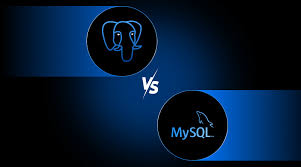Leveraging PHP for Mobile-Optimized Web Applications
In today's fast-paced digital landscape, mobile optimization is no longer an option but a necessity. With a significant portion of web traffic coming from mobile devices, creating mobile-optimized web applications is crucial for delivering a seamless user experience. PHP, a versatile server-side scripting language, offers robust tools and techniques to help developers build responsive and efficient mobile-friendly web applications. This blog explores how to leverage PHP to create mobile-optimized web applications that cater to the needs of modern users.

Responsive Design with PHP and CSS Frameworks
Responsive design is the cornerstone of mobile optimization. By using PHP in conjunction with CSS frameworks like Bootstrap, Foundation, or Tailwind CSS, you can create web applications that adapt seamlessly to different screen sizes and orientations.
- Bootstrap: Bootstrap provides a responsive grid system and pre-built components that make it easy to create mobile-friendly layouts. PHP can dynamically generate HTML with Bootstrap classes to ensure consistency and responsiveness across pages.
- Foundation: Similar to Bootstrap, Foundation offers a flexible grid system and responsive components. PHP can be used to include Foundation’s CSS and JavaScript files conditionally, depending on the device type.
- Tailwind CSS: Tailwind’s utility-first approach allows for highly customizable designs. PHP can help inject Tailwind classes dynamically based on user preferences or device capabilities.
Example: Use PHP to detect the user’s device type and serve a tailored HTML template that incorporates responsive design principles using your chosen CSS framework.
2. Adaptive Images with PHP
Images are a significant part of web content, and optimizing them for mobile devices is crucial for performance and user experience. PHP can be used to serve adaptive images based on the device’s screen size and resolution.
- Image Resizing: PHP’s GD library or the more powerful ImageMagick can be used to resize images on the server side before serving them to the client.
- Responsive Images: Implement the
srcsetattribute in your HTML to provide different image sizes for different screen resolutions. PHP can dynamically generate thesrcsetattribute values based on available image sizes.
Example: Use PHP to generate responsive image tags that serve appropriately sized images for mobile, tablet, and desktop devices, reducing load times and improving performance.
3. Optimizing Performance with Caching and Compression
Performance optimization is key to delivering a smooth mobile experience. PHP offers several techniques for caching and compression that can significantly enhance the speed and responsiveness of your web applications.
- Caching: Use PHP to implement server-side caching mechanisms. Tools like Memcached or Redis can store frequently accessed data in memory, reducing database queries and load times.
- Gzip Compression: Enable Gzip compression on your PHP server to reduce the size of HTML, CSS, and JavaScript files. This can be achieved by configuring the server settings or using PHP’s built-in functions.
Example: Implement a caching layer in your PHP application to store rendered pages or database queries, and enable Gzip compression to speed up content delivery to mobile devices.
4. Progressive Web Apps (PWAs) with PHP
Progressive Web Apps (PWAs) combine the best of web and mobile apps, offering offline capabilities, push notifications, and a native app-like experience. PHP can be used to build the backend of a PWA, handling data storage, user authentication, and API integrations.
- Service Workers: Implement service workers to cache assets and enable offline functionality. PHP can serve the initial HTML and JavaScript files needed to register service workers.
- Manifest File: Create a web app manifest file that defines the appearance and behavior of your PWA when installed on a mobile device.
Example: Develop a PWA using PHP for the backend and JavaScript for the frontend, providing features like offline access and push notifications to enhance the mobile user experience.
5. Geolocation and Mobile-Specific Features
Mobile devices offer unique features like geolocation, camera access, and touch gestures. PHP can be integrated with frontend technologies to leverage these features in your web applications.
- Geolocation: Use PHP to process and store location data sent from the client-side JavaScript. This can be useful for location-based services like maps, local business searches, and targeted content.
- Mobile-Specific APIs: Implement features that take advantage of mobile-specific APIs, such as accessing the device camera for uploading photos or enabling touch-based interactions.
Example: Create a location-based service where PHP handles the storage and processing of geolocation data, allowing users to find nearby services or events.
6. Security Considerations for Mobile Users
Security is paramount, especially for mobile users who often access web applications over public or less secure networks. PHP provides various tools and best practices to secure your web applications.
- HTTPS: Ensure all data transmitted between the server and client is encrypted using HTTPS. PHP can help manage SSL certificates and enforce secure connections.
- Input Validation: Implement robust input validation and sanitization to protect against common attacks like SQL injection and cross-site scripting (XSS).
Example: Use PHP to enforce HTTPS connections and validate user input, ensuring that your mobile-optimized web application is secure and trustworthy.
Conclusion
Leveraging PHP for mobile-optimized web applications allows developers to create responsive, high-performance, and secure web experiences. By combining PHP with modern frontend technologies and best practices, you can build applications that cater to the needs of mobile users, ensuring they receive a seamless and engaging experience.
Whether you're developing a responsive website, a PWA, or integrating mobile-specific features, PHP offers the tools and flexibility needed to succeed in today's mobile-first world. Embrace the power of PHP to create web applications that not only meet but exceed the expectations of mobile users.




